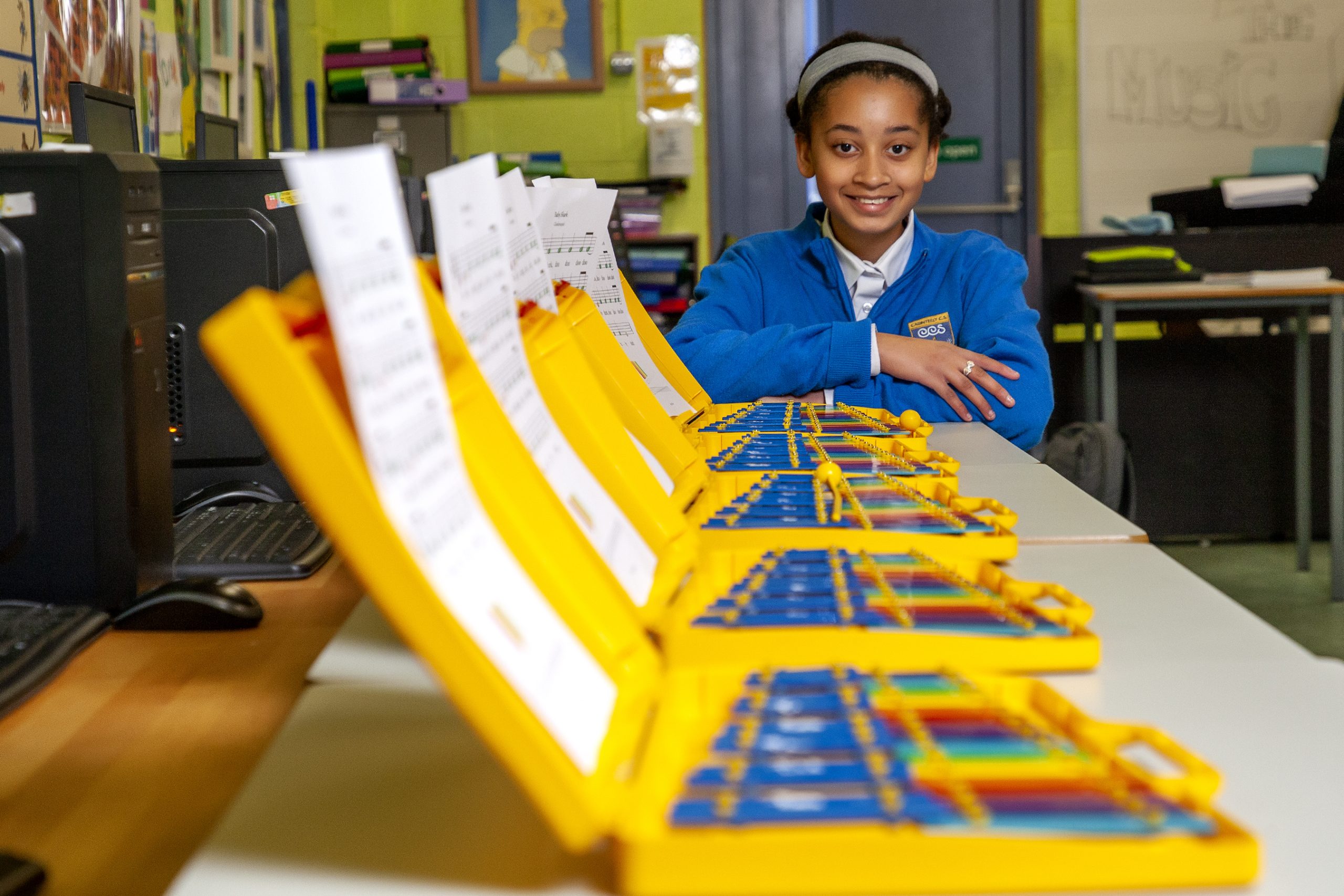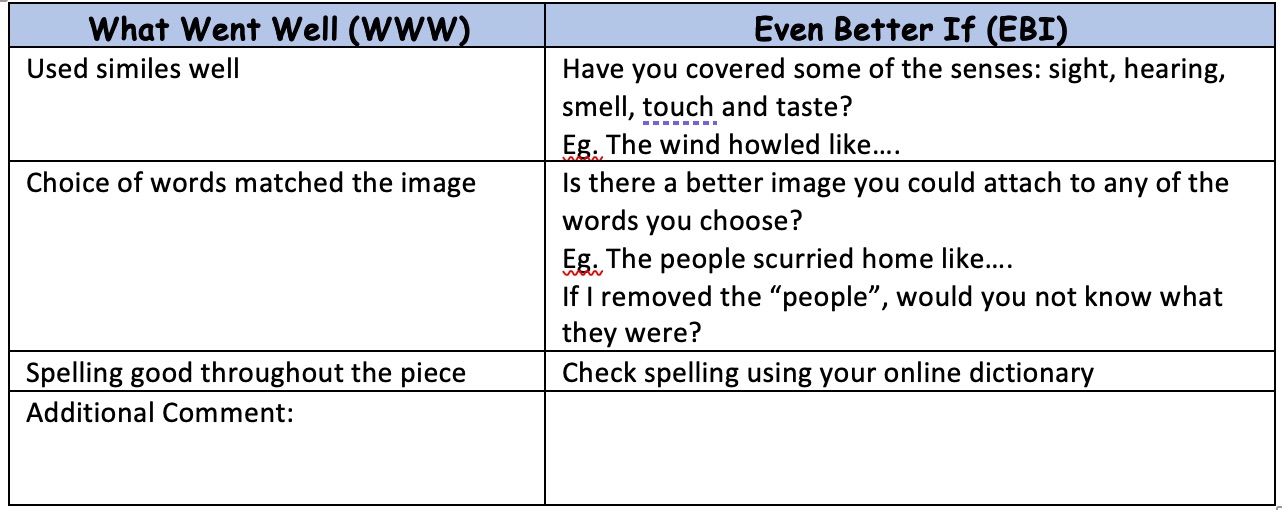

We have been focussing on improving our approach to effectively assess students’ written work through the use of formative feedback grids (What Went Well/Even Better If).
In 2020-21, we did a piece of research on teacher collaboration in creating and using these grids effectively and found that teacher understanding of formative feedback is the single most important factor in creating a system of feedback. It requires an open mindset and a belief that ability is not fixed, ie, that all students can improve. Teachers are the catalyst in that improvement.
“The most powerful single moderator that enhances achievement is feedback. It means, for teachers, providing information as to how and why the student understands or misunderstands, and what directions the student must take to improve”. (John Hattie)
Our research also showed that teachers need time to work with colleagues in the formulation of feedback and to reflect with colleagues and students on how well provision of feedback to students works in practice.

In 2021-22, we did another piece of research on the student experience of the grids. We found that students wanted the grids to be personalised and to clearly show them what they need to do to improve, while providing time in class or at home to make the suggested improvements to their work.
Our Learning target for 2022-23 is to continue to use Formative Feedback grids when giving written feedback to students on their work. We will organise a workshop to give time and support to teachers in their subject departments to take the learning from the research and implement it in the creation of WWW/EBI grids to deepen teacher understanding of a highly effective formative feedback system. We will look at giving students DIRT (Dedicated Improvement and Reflection Time) after returning a WWW/EBI grid to allow time to make improvements.
Our feedback grid looks like this:

In the WWW column, teachers fill in the Criteria for Success or the things students need to do to answer this question well. In the EBI column, teachers fill in how students need to do this exactly.
When returning the work, teachers highlight that parts that apply to the student. Ideally, teachers also add a personalised comment to point students the right direction to improve their work.
Teachers give time improvements to be made to the work so that the next time students attempt that question or task, they will know what to do.
The main thing is that students can communicate with their teacher about what is the most helpful way to use these grids to help them. The aim of the grid is to increase students’ independence so that they can make improvements to their work on their own.
Here is an example from an English question:
Example: English
Question: Write a paragraph to describe the weather.
Learning Intention: To use similes to create atmosphere.
Success Criteria:
1. Use ‘as’ or ‘like’ to create a vivid description of a stormy day.
2. Choose appropriate words and images to compare each object.
3. Use correct spelling

Formative Assessment using Digital Portfolios
CCS has engaged with the Digital Portfolio Initiative in conjunction with the Professional Development Support Service for Teachers and a number of other schools in Ireland since 2022.
The focus is on formative assessment strategies are used to measure student learning and understanding of a topic.
Through the initiative teachers are exploring how to practice formative assessment using devices and online platforms. The aim is to improve our teaching, learning and assessment while adapting to the modern digital age.
Technology in CCS
Our students already use their Microsoft Office 365 accounts in their day-to-day classes. Teachers use MS Teams for their course content – students all have a Teams One Note for each subject. In the content library they access the work covered in classes.
In their own class notebook in One Note, they can store information, do homework, take pictures, access videos etc..
The use of one-to-one devices with our 1st and 2nd year students has been a great success. They have:
AT CCS we offer many opportunities for students to engage in STEM.
At Junior Cycle we offer Short Courses in Coding and Digital Media Literacy. We also offer Science, Wood Technology, Graphics and Engineering.
At TY we offer 10-week taster courses of Physics, Chemistry, Biology, Computer Science & Coding, Astrophysics, Technology, Construction, Graphics, Engineering also Sustainability & Climate Action and Car Maintenance.
At Senior Cycle we offer Physics, Biology, Chemistry, Computer Science, Engineering, Construction Studies, Design & Communication Graphics.
Throughout the school year, every year group has the chance to engage in many STEM activities. Examples from this year include:
Taking part in national challenges such as the BEBRAS Computational Thinking Challenge, IMTA Junior Maths Quiz, ISTA Senior Science Quiz and the Astro Pi Challenge.
We also run a Science club and a Maths Support Club.
Every year group takes part in the activities that occur during Science week, Engineering week and Maths week.
We have also had students participate in BT Young Scientist and SCiFest.
Trinity Access Maths, is a project that will partner in the co-development and implementation of initiatives to address the barriers faced in the teaching & learning of mathematics.
In February 2022, we were fortunate to be chosen as one of five schools to take part in this exciting project. Six of our Maths teachers have participated in the project which has seen the reinvention of the Junior Cycle Maths syllabus in creative and interesting ways. Our 1stYear students visited Trinity College Dublin as part of the initiative for a day of Maths fun and activities.
We have been working alongside other schools, in Dublin and Kilkenny, sharing ideas and approaches to teaching mathematics. Our aim is to improve our students’ attitudes to Mathematics!